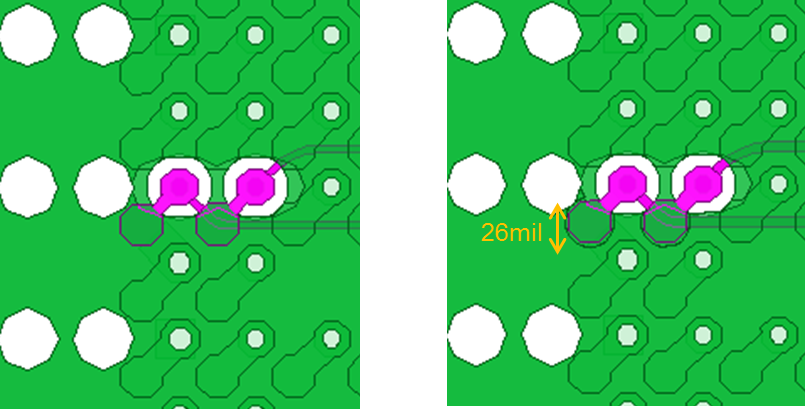Visible to Intel only — GUID: joc1463008729855
Ixiasoft
Visible to Intel only — GUID: joc1463008729855
Ixiasoft
GND Cutout Under BGA Pads in Fan-out Configuration
If you use the dog-bone fan-out configuration, Intel recommends that you have one GND reference plane cutout under the BGA pad to reduce capacitance in this area. Larger GND cutouts provide better impedance transition at the fan-out; however, the GND cutout in the fan-out is limited due to limited routing space.


TL impedance impact effect with dog-bone fan-out configuration and with/without GND cutout underneath of BGA pad is approximately 10 Ω based on TDR performance in Figure 8.
The red line indicates the original design and 100 Ω TL routing impedance.
The pink line indicates the original design and 90 Ω TL routing impedance.
The blue line indicates the original design with 26 mil diameter GND cutout under the BGA pad and 90 Ω TL routing impedance.

The improvement on insertion loss is 1 dB and approximately 5 dB on return loss at 14 GHz.